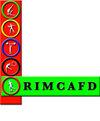登山者发射手势运动模式的差异
IF 0.7
4区 医学
Q4 SPORT SCIENCES
Revista Internacional De Medicina Y Ciencias De La Actividad Fisica Y Del Deporte
Pub Date : 2021-03-22
DOI:10.15366/RIMCAFD2021.81.002
引用次数: 0
摘要
本研究的目的是描述和比较不同技术水平的攀岩者在使用动态技术时的运动模式。参与者样本为10名登山者,5名高技能登山者和5名低技能登山者。测量了不同身体部位的位置、速度和加速度等运动学变量。采用23点解剖模型和IBV KINESCAN软件对运动模式进行数字化处理。方差分析显示了一些运动变量在技能水平上的差异。具体来说,熟练的攀岩者在冲力阶段获得了更高的质心、髋部和肘部速度。结果表明,动态技术中的技能允许登山者在某些身体部位产生更快的运动,以达到比起始位置更高的抓手位置。Rev.int.med.cienc.act.fís.deporte vol. 21 número 81 ISSN: 1577-0354本文章由计算机程序翻译,如有差异,请以英文原文为准。
DIFERENCIAS EN LOS PATRONES MOTORES DEL GESTO DE LANZAMIENTO EN ESCALADORES
The aim of the present study was to describe and compare the motor patterns of climbers with different skill levels when using the dyno technique. The sample of participants was 10 climbers, 5 high skill climbers and 5 low skill climbers. Kinematic variables of position, velocity and acceleration of different body segments were measured. A 23-point anatomical model, together with the IBV KINESCAN software, were used to digitize the movement patterns. A MANOVA showed differences according to the skill level in some kinematic variables. Specifically, the skilled climbers achieved higher velocity of the centre of mass, hip and elbows during the impulse phase. Results suggest that the skill in the dyno technique allowed climbers to generate faster movements in certain body segments in order to reach a handhold positioned at a higher height than the starting position. Rev.int.med.cienc.act.fís.deporte vol. 21 número 81 ISSN: 1577-0354 16
求助全文
通过发布文献求助,成功后即可免费获取论文全文。
去求助
来源期刊
CiteScore
1.00
自引率
15.40%
发文量
49
审稿时长
>12 weeks
期刊介绍:
La Revista Internacional de Medicina y Ciencias de la Actividad Física y del Deporte (Rev.int.med.cienc.act.fis.deporte) es una revista multidisciplinar, científico-técnica, en torno a las Ciencias de la Actividad Física y del Deporte, que abarca temas tales como: actividades acuáticas, antropomotricidad, desarrollo y aprendizaje motor, arquitectura y equipamiento deportivo, bellas artes y deporte, biofísica, física y biomecánica del deporte, economía y deporte, bioquímica del deporte, biomatemáticas y estadística del deporte, comunicación y deporte, técnica y táctica deportiva, derecho deportivo, documentación deportiva, Educación Física y ciencias de la educación, educación física especial y deporte adaptado, expresión corporal, epistemología, ética y filosofía del deporte, medicina y salud de la actividad física, fisiología del ejercicio, sociología del deporte, psicología del deporte, motricidad humana, psicomotricidad, geografía y deporte, geología y deporte, gestión deportiva, historia de la educación física y del deporte, juegos motores, kineantropometría, literatura y lingüística del deporte, meteorología y deporte, ocio y recreación, olimpismo o tecnología del deporte. Todos los temas son publicables siempre que estén relacionados con la actividad física y el deporte y sea explícita esta relación en el artículo.

 求助内容:
求助内容: 应助结果提醒方式:
应助结果提醒方式:


